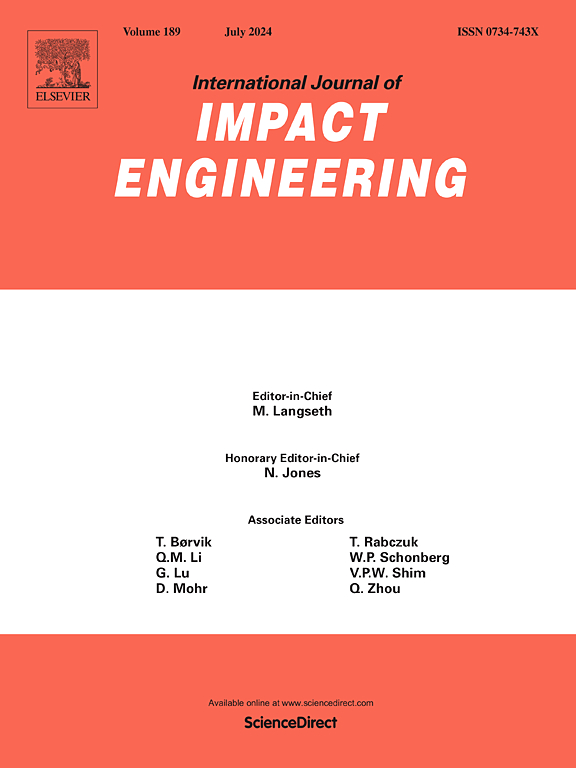用冲击物理模型研究了超高速撞击平面和球面目标时的弹射角
IF 5.1
2区 工程技术
Q1 ENGINEERING, MECHANICAL
International Journal of Impact Engineering
Pub Date : 2025-05-21
DOI:10.1016/j.ijimpeng.2025.105400
引用次数: 0
摘要
在美国宇航局2022年的双小行星重定向测试(DART)任务中,DART航天器与双小行星Didymos(65803)的卫星Dimorphos小行星相撞。撞击产生的后坐力改变了Dimorphos的轨道周期。为了对该任务进行分析,需要一种更精确的方法来估计撞击抛射物携带的动量,以便能够适当地表征从撞击物到目标(例如Dimorphos)的动量传递。由于弹射速度和角度取决于目标曲率,曲率对撞击结果的影响应予以解决。本文采用二维柱面坐标的hydrocode模拟方法,研究了微重力条件下超高速碰撞产生的弹射速度和弹射角。在小物体上的开挖流中的物质对一种称为持续加速度的过程很敏感,这种过程是由微重力引起的流的可压缩性引起的。我们评估了持续加速度的影响,并提出了一个弹射阈值,以准确估计微重力条件下的弹射速度和角度。用我们的弹射阈值研究了目标曲率和材料强度对弹射行为的影响。我们的方法将有助于小体挖掘的分析。本文章由计算机程序翻译,如有差异,请以英文原文为准。
Ejection angles during hypervelocity impacts on flat and spherical targets investigated with shock physics modeling
In NASA's 2022 Double Asteroid Redirection Test (DART) mission, the DART spacecraft collided with the asteroid Dimorphos, the satellite of the binary asteroid (65,803) Didymos. The recoil from the impact ejecta changed the orbital period of Dimorphos. For analysis of this mission, a more accurate method is needed to estimate the momentum carried away by the impact ejecta, so the momentum transfer from the impactor to the target (e.g., Dimorphos) can be properly characterized. Since ejection velocity and angle depend on the target curvature, the effects of the curvature on the impact outcomes should be addressed. This study investigated the ejection velocity and angle generated by hypervelocity impacts under microgravity conditions using a hydrocode simulation with two-dimensional cylindrical coordinates. The materials within an excavation flow on small bodies are sensitive to a process called sustained acceleration, which comes from the compressibility of the flow because of microgravity. We evaluated the effects of sustained acceleration and proposed an ejection threshold to estimate the ejection velocity and angle accurately under microgravity conditions. The effects of target curvature and material strength on the ejection behavior have also been investigated with our ejection threshold. Our method will be helpful for analyzing the excavation of small bodies.
求助全文
通过发布文献求助,成功后即可免费获取论文全文。
去求助
来源期刊

International Journal of Impact Engineering
工程技术-工程:机械
CiteScore
8.70
自引率
13.70%
发文量
241
审稿时长
52 days
期刊介绍:
The International Journal of Impact Engineering, established in 1983 publishes original research findings related to the response of structures, components and materials subjected to impact, blast and high-rate loading. Areas relevant to the journal encompass the following general topics and those associated with them:
-Behaviour and failure of structures and materials under impact and blast loading
-Systems for protection and absorption of impact and blast loading
-Terminal ballistics
-Dynamic behaviour and failure of materials including plasticity and fracture
-Stress waves
-Structural crashworthiness
-High-rate mechanical and forming processes
-Impact, blast and high-rate loading/measurement techniques and their applications
 求助内容:
求助内容: 应助结果提醒方式:
应助结果提醒方式:


